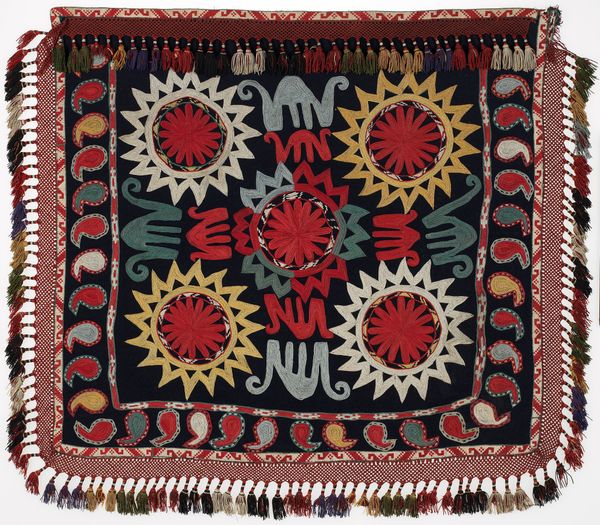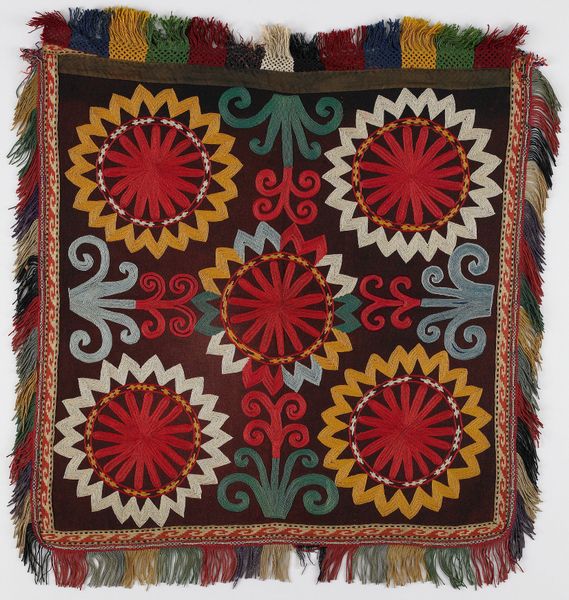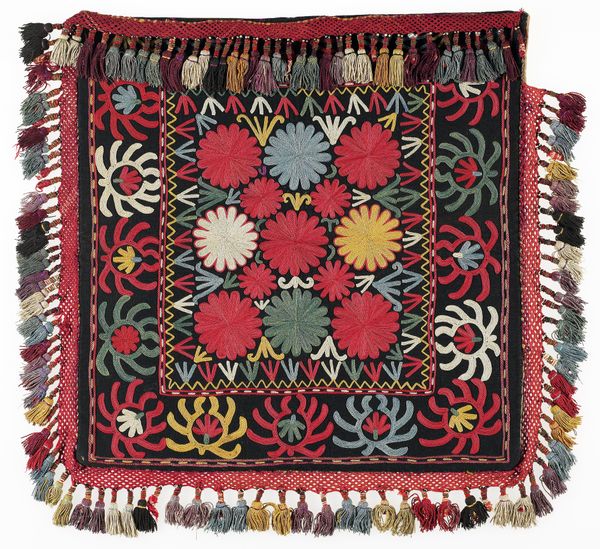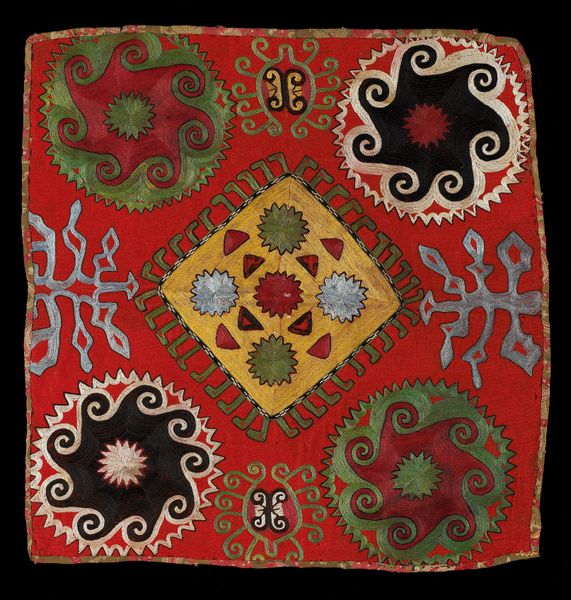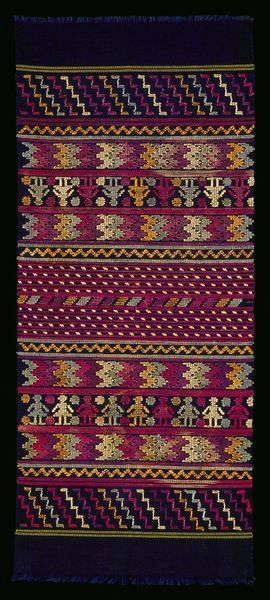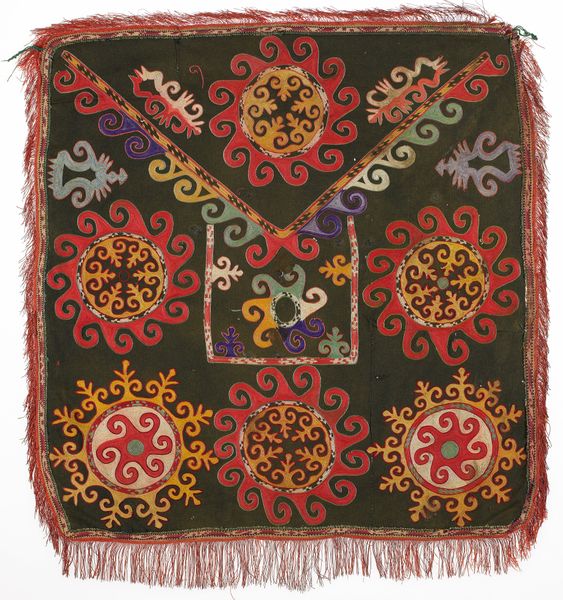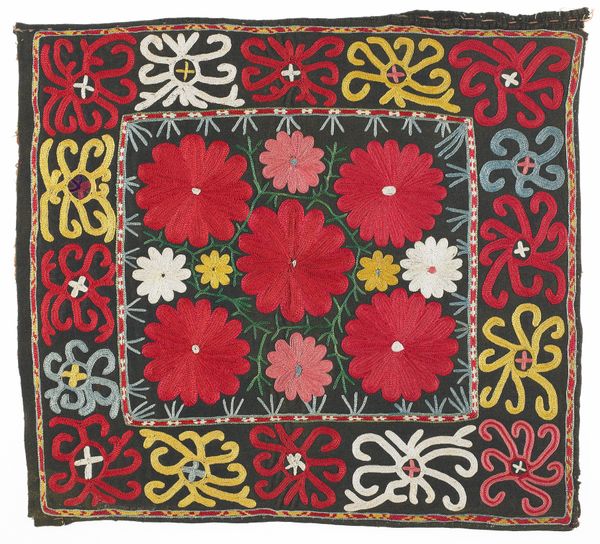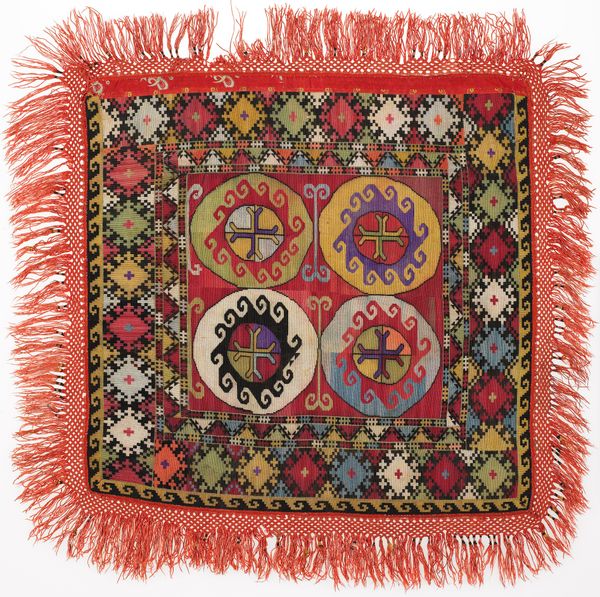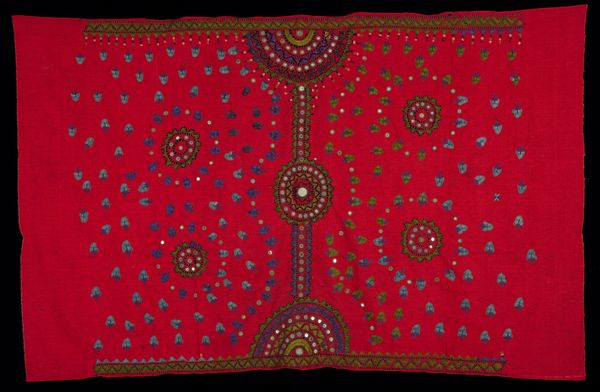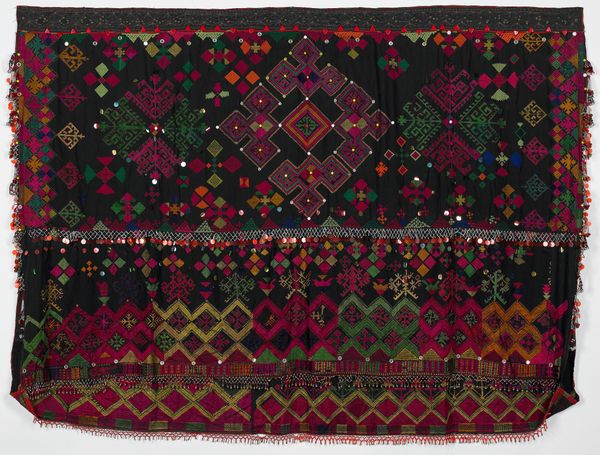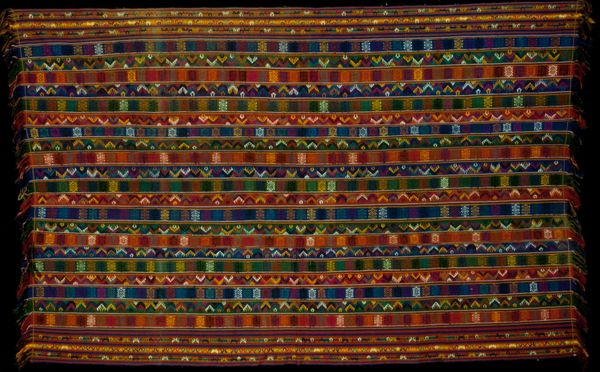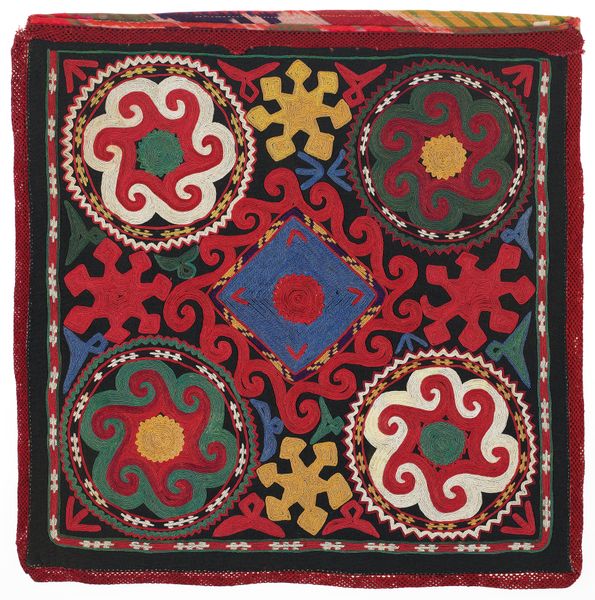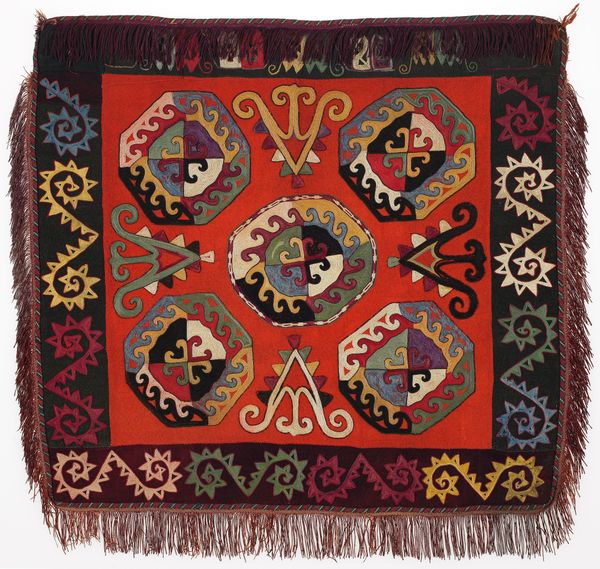
silk, textile
#
pattern heavy
#
natural stone pattern
#
silk
#
asian-art
#
textile
#
fashion and textile design
#
geometric pattern
#
ethnic pattern
#
geometric
#
repetition of pattern
#
pattern repetition
#
textile design
#
decorative-art
#
layered pattern
#
combined pattern
Dimensions: 27 x 29 in. (68.58 x 73.66 cm) (Includes fringe)
Copyright: Public Domain
Curator: What a vibrant textile! Here we have "Ilgich," dating from the 20th century. It’s a stunning example of textile art using wool, cotton, and silk and currently resides at the Minneapolis Institute of Art. Editor: My first impression is pure joy. The riot of colors—reds, greens, blues—juxtaposed against that intense black background, the geometric motifs... it all creates a dazzling visual rhythm. Curator: It's likely from the Kungrat people of Central Asia. The cultural context is vital; these textiles served not just as decoration, but also as powerful signifiers of identity and status, communicating lineage, marital status, and tribal affiliation. The repetition of the patterns themselves would have resonated with community traditions. Editor: Indeed. Focusing on the design, notice how the artist has constructed a complex pattern from a series of geometric forms. The symmetry, the repetition, the contrasting colors--each element has been carefully considered to achieve visual balance and harmony. The borders create an echo of the square they enframe. Curator: Precisely. The bold colors, considered through a feminist lens, might signify a celebration of traditionally female crafts, of transforming utilitarian objects into vehicles of artistic expression and cultural commentary. I also consider it as a response to the male-dominated traditions within fine art. Editor: I appreciate that perspective, and it resonates deeply. And looking at the central medallion... those swirling forms... semiotically, one might interpret those forms as echoing or subverting more rigid geometric codes, signaling fluidity and adaptability. The layered effect and interweaving colors gives a kinetic feeling that transcends the static image. Curator: We might also examine its relationship to global trade networks. Where did these dyes come from? What socio-economic factors influenced the availability of materials and designs? Considering this within postcolonial studies gives us yet another valuable context. Editor: Absolutely. Ultimately, what speaks to me is how the interplay of shapes, colors, and textures evokes such a powerful and moving experience, transcending temporal boundaries. It offers its intrinsic, self-contained world. Curator: Thinking of "Ilgich", I'm reminded of the way art serves as a living archive, speaking volumes about identity and place, even across vast distances and cultural divides. Editor: And for me, the composition makes me contemplate order and complexity that can result when working with self-imposed restrictions.
Comments
No comments
Be the first to comment and join the conversation on the ultimate creative platform.
